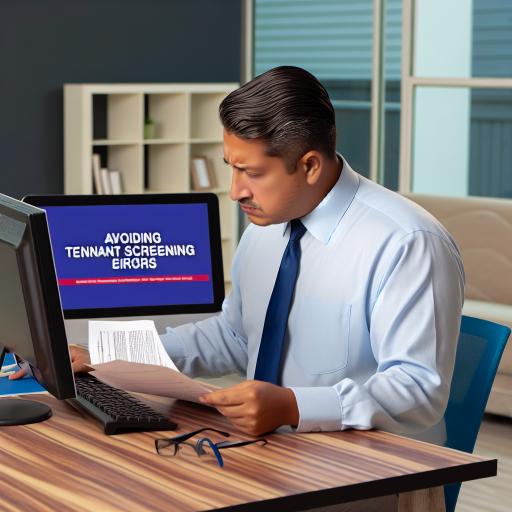Establishing Clear Rent Policies and Expectations
Importance of Clear Policies
Clear rent policies reduce confusion for both landlords and tenants.
They create a framework for a healthy landlord-tenant relationship.
Establishing policies upfront sets expectations from the beginning.
Creating a Written Agreement
A written rental agreement outlines all terms clearly.
Include payment due dates and accepted payment methods.
Detail the consequences of late payments.
Make sure to cover any additional fees or penalties.
Effective Communication
Regular communication prevents misunderstandings.
Use reminders to inform tenants about upcoming payments.
Provide clear channels for tenants to ask questions.
Prompt responses demonstrate professionalism and care.
Define Payment Options
Offer multiple payment methods to increase convenience.
Consider electronic payments to streamline the process.
Avoiding cash transactions enhances security for both parties.
Clarifying Maintenance Responsibilities
Specify who is responsible for repairs and maintenance issues.
This clarity helps prevent disputes over service expectations.
Document maintenance requests to keep records transparent.
Consistent Enforcement of Policies
Enforce policies consistently to maintain fairness.
Address violations promptly to deter future issues.
Maintain a calm demeanor when discussing policy enforcement.
Encouraging Open Feedback
Encourage tenants to share their experiences and concerns.
This helps identify areas for improvement in your policies.
A feedback mechanism fosters a sense of community and trust.
Utilizing Technology for Automated Rent Collection
Benefits of Automated Rent Collection
Automated rent collection simplifies the payment process for landlords and tenants.
It reduces the chances of late payments due to forgetfulness.
Additionally, it streamlines financial management for landlords.
Moreover, it minimizes human error during payment processing.
Choosing the Right Platform
Select a platform that matches your management style and tenant needs.
Consider features like mobile access and payment reminders.
Look for systems that integrate with your existing rental management tools.
Furthermore, evaluate the customer support offered by each service.
Setting Up Automated Payments
Start by informing tenants about the new payment method.
Provide clear instructions on how to set up their accounts.
Encourage tenants to opt for recurring payments for convenience.
Additionally, remind them to update their payment details when necessary.
Addressing Tenant Concerns
Some tenants may be wary of automated payments.
Clearly communicate the security measures in place for their data.
Offer reassurance regarding the process and how to handle issues.
Moreover, be open to feedback and questions about the platform.
Monitoring and Adjusting the System
Regularly review the effectiveness of the rent collection system.
Track payment patterns and tenant feedback for insights.
If issues arise, adjust the processes accordingly.
Continually seek improvements to enhance the tenant experience.
Implementing a Transparent Communication System with Tenants
Establish Clear Communication Channels
Start by setting up a dedicated communication platform.
This can include email, messaging apps, or a tenant portal.
Ensure tenants know how to reach you for inquiries or issues.
Transparency builds trust and promotes open dialogues.
Regular Updates and Announcements
Provide regular updates to tenants regarding property issues.
Consider sending monthly newsletters to share important information.
This could include maintenance schedules or policy changes.
Tenant engagement can significantly reduce misunderstandings.
Encourage Feedback from Tenants
Invite tenants to share their thoughts and suggestions.
Implement a feedback system to gather their opinions.
Utilizing surveys can help you understand tenant satisfaction.
Addressing their concerns fosters a positive environment.
Set Clear Policies and Procedures
Develop clear guidelines on communication protocols.
Share these policies with tenants during lease signing.
Make sure they know how to report issues effectively.
This clarity will minimize confusion and disputes later.
Use Technology to Streamline Communication
Leverage property management software for efficiency.
Such tools allow streamlined communication and documentation.
Automated reminders for rent payments can reduce late fees.
Technology simplifies processes and enhances tenant experience.
Be Responsive and Approachable
Always respond to tenant inquiries promptly.
This shows you value their concerns and opinions.
A timely response can prevent disputes before they escalate.
Be approachable to establish a positive landlord-tenant relationship.
Gain More Insights: Understanding Rent Laws To Ensure Financial Compliance In Property Management
Setting Up a Grace Period for Late Payments
Importance of a Grace Period
A grace period can encourage timely rent payments.
It provides tenants with a buffer during financial difficulties.
Addressing this issue enhances landlord-tenant relationships.
Furthermore, it can reduce the frequency of disputes.
Determining the Length of the Grace Period
The length of the grace period is crucial.
Many landlords offer a grace period of 3 to 5 days.
This timeframe allows tenants to manage unexpected expenses.
Consider local rental laws when determining this period.
Research typical practices in your area to remain competitive.
Communicating the Grace Period to Tenants
Clear communication is essential for successful implementation.
Include grace period details in the lease agreement.
Use written reminders to reinforce the policy.
Send notifications ahead of each rent due date.
Additionally, discuss the grace period during tenant orientation.
Tracking Payments During the Grace Period
Implement an efficient system for tracking rent payments.
Consider using property management software for organization.
Online platforms can simplify the tracking process.
Make sure to note any payments received within the grace period.
This practice helps you avoid potential disputes in the future.
Evaluating the Effectiveness of the Grace Period
Regularly assess the grace period’s impact on rent collection.
Tracking late payments can provide valuable insights.
Ask tenants for feedback on the policy.
This can help you make necessary adjustments.
Ultimately, a well-considered grace period strengthens lender relationships.
Explore Further: Key Steps To Identify Trustworthy Tenants For Your Rental Properties
Conducting Regular Maintenance and Inspections to Prevent Issues
The Importance of Regular Maintenance
Regular maintenance keeps properties in optimal condition.
It helps prevent small issues from becoming major problems.
Furthermore, it enhances tenant satisfaction and retention.
Establishing a Maintenance Schedule
Create a detailed maintenance schedule for your properties.
Consider seasonal tasks like gutter cleaning and HVAC servicing.
Use reminders to stay consistent with inspections.
This proactive approach minimizes potential damages.
Conducting Routine Inspections
Schedule inspections every six months or at least annually.
Inspect both the interior and exterior of the property.
Look for potential safety hazards, like mold or leaks.
Document your findings and address any issues promptly.
Effective Communication with Tenants
Inform tenants about the maintenance schedule in advance.
Encourage them to report concerns as they arise.
Open channels of communication build trust and cooperation.
Utilizing Technology for Maintenance Management
Consider property management software for tracking maintenance requests.
Many platforms allow tenants to report issues directly online.
This streamlines communication and enhances response times.
Addressing Tenant Concerns Promptly
Respond quickly to tenant maintenance requests.
Timely repairs show tenants that you value their comfort.
Furthermore, this can reduce tenant disputes over unresolved issues.
The Impact of Regular Maintenance on Profitability
Preventative maintenance can save landlords significant costs.
Addressing problems early leads to less expensive repairs.
Also, it can prolong the life of your property and its systems.
Building Long-Term Relationships with Tenants
Regular maintenance fosters positive relationships with tenants.
Happy tenants are more likely to renew their leases.
Ultimately, this leads to lower vacancy rates for landlords.
Gain More Insights: The Importance Of Clear Rent Policies In Ensuring Timely Tenant Payments

Offering Incentives for Early Rent Payments
Understanding the Benefits
Incentives can motivate tenants to pay rent early.
Offering benefits demonstrates appreciation for prompt payments.
This practice fosters positive relationships between landlords and tenants.
Consequently, it reduces late payment disputes.
Types of Incentives
Consider various incentive options to encourage early payments.
- Discounts for early payment.
- Small gift cards for timely transactions.
- Flexible payment options for early payers.
These incentives make tenants feel valued.
Implementing Incentives Effectively
Clearly communicate the incentives to tenants.
Post reminders in common areas such as mailrooms.
Use email to notify tenants about available incentives.
Ensure transparency about how benefits work.
This clarity enhances tenant participation and satisfaction.
Monitoring and Adjusting Incentives
Regularly assess the effectiveness of your incentives.
Gather feedback from tenants on their preferences.
Modify incentives based on tenant responses.
By doing so, you can maintain tenant engagement in the program.
Gain More Insights: How To Evaluate Rental Applications For Tenant Selection Success
Creating a Detailed Lease Agreement to Minimize Confusion
Importance of a Comprehensive Lease Agreement
A detailed lease agreement sets clear expectations for both landlords and tenants.
It minimizes misunderstandings and potential disputes down the line.
Moreover, it provides a structured approach to rental arrangements.
Essential Components to Include
First, outline the rental amount and payment due dates in detail.
Include accepted payment methods, such as bank transfer or checks.
Next, specify the duration of the lease and any renewal conditions.
Additionally, clarify terms regarding security deposits and their return.
Make sure to outline tenant responsibilities, such as maintenance and repairs.
Addressing Tenant Rights and Responsibilities
Clearly outlining tenant rights can prevent conflicts later on.
Include clauses about privacy rights, notice periods, and termination rules.
Furthermore, explain the procedures for addressing maintenance issues.
In addition, ensure that both parties understand the rules for alterations to the property.
Formalizing the Agreement
Ensure the lease is signed by both parties to formalize the agreement.
Consider having it witnessed or notarized for added legal assurance.
After signing, provide copies to both the landlord and tenant for reference.
Regularly review and update the lease to reflect any changes in laws or policies.
Strategies for Addressing Tenants’ Concerns Promptly
Establish Clear Communication Channels
Open communication fosters trust between landlords and tenants.
Use various platforms like email, phone, and messaging apps.
Ensure tenants know how to reach you for urgent matters.
Post your contact information in common areas for easy access.
Respond Quickly to Inquiries
Timely responses diminish tenant frustration and misunderstandings.
Aim to reply within 24 hours to all tenant inquiries.
Utilize automated email responses to acknowledge receipt of queries.
Manage expectations by informing tenants when they can expect a detailed reply.
Document Concerns Thoroughly
Keep records of all communication with your tenants.
This documentation serves as a reference in case of disputes.
Make a habit of summarizing conversations in follow-up emails.
Encourage tenants to document their concerns in writing as well.
Provide Regular Updates
Regular updates about property issues keep tenants informed.
Share progress on repairs or improvements to foster transparency.
Consider monthly newsletters or announcements to convey important information.
Solicit Feedback Proactively
Ask tenants for feedback on their living experience.
Use surveys to gauge tenant satisfaction levels.
Address issues before they escalate into disputes.
Show tenants that their opinions matter and lead to improvements.
Offer Solutions and Alternatives
When problems arise, focus on providing solutions.
Flexibility can help resolve disputes amicably.
Present several options to tenants when addressing concerns.
This empowers them to have a say in the resolution process.




